Abdulla Al-Ali
Distributed CNN Inference on Resource-Constrained UAVs for Surveillance Systems: Design and Optimization
May 23, 2021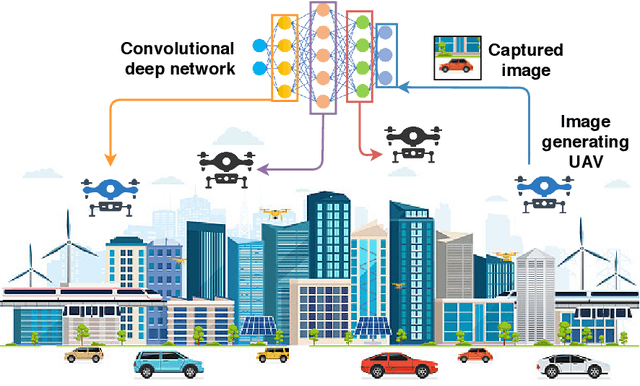
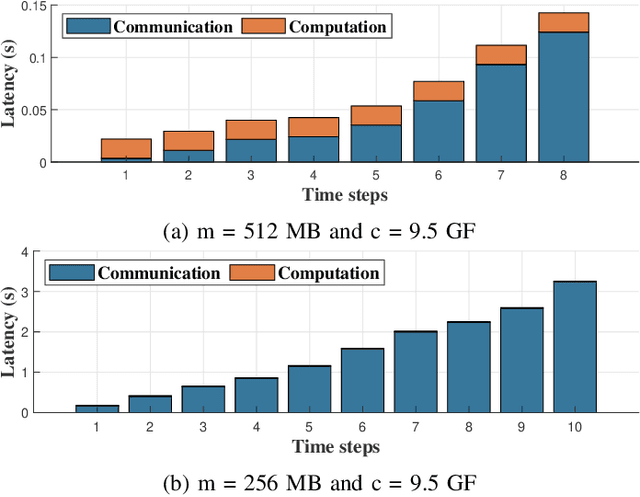
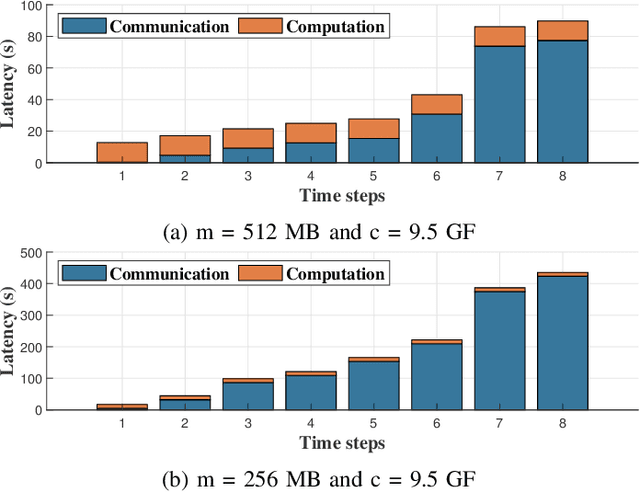
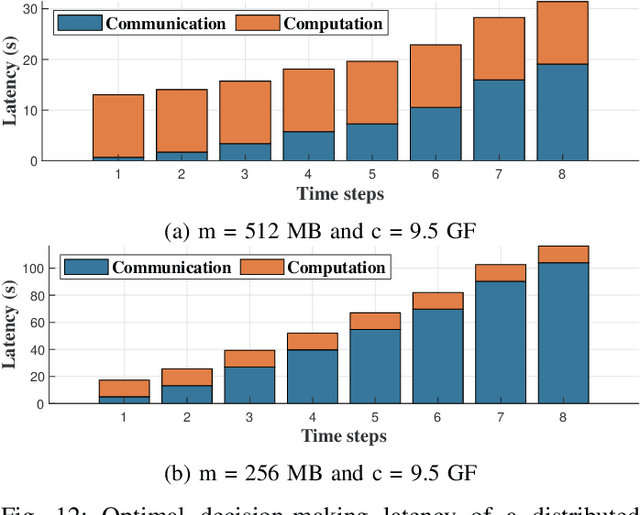
Abstract:Unmanned Aerial Vehicles (UAVs) have attracted great interest in the last few years owing to their ability to cover large areas and access difficult and hazardous target zones, which is not the case of traditional systems relying on direct observations obtained from fixed cameras and sensors. Furthermore, thanks to the advancements in computer vision and machine learning, UAVs are being adopted for a broad range of solutions and applications. However, Deep Neural Networks (DNNs) are progressing toward deeper and complex models that prevent them from being executed on-board. In this paper, we propose a DNN distribution methodology within UAVs to enable data classification in resource-constrained devices and avoid extra delays introduced by the server-based solutions due to data communication over air-to-ground links. The proposed method is formulated as an optimization problem that aims to minimize the latency between data collection and decision-making while considering the mobility model and the resource constraints of the UAVs as part of the air-to-air communication. We also introduce the mobility prediction to adapt our system to the dynamics of UAVs and the network variation. The simulation conducted to evaluate the performance and benchmark the proposed methods, namely Optimal UAV-based Layer Distribution (OULD) and OULD with Mobility Prediction (OULD-MP), were run in an HPC cluster. The obtained results show that our optimization solution outperforms the existing and heuristic-based approaches.
Design Challenges of Multi-UAV Systems in Cyber-Physical Applications: A Comprehensive Survey, and Future Directions
Oct 23, 2018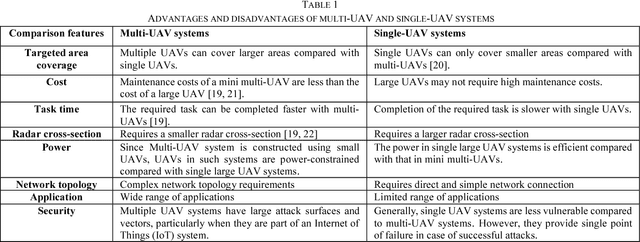

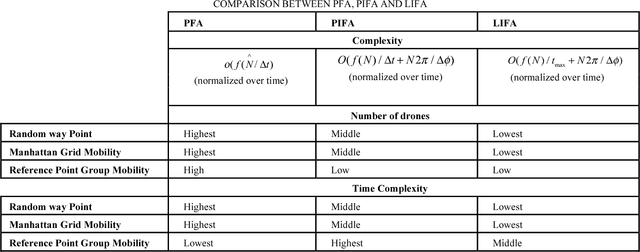
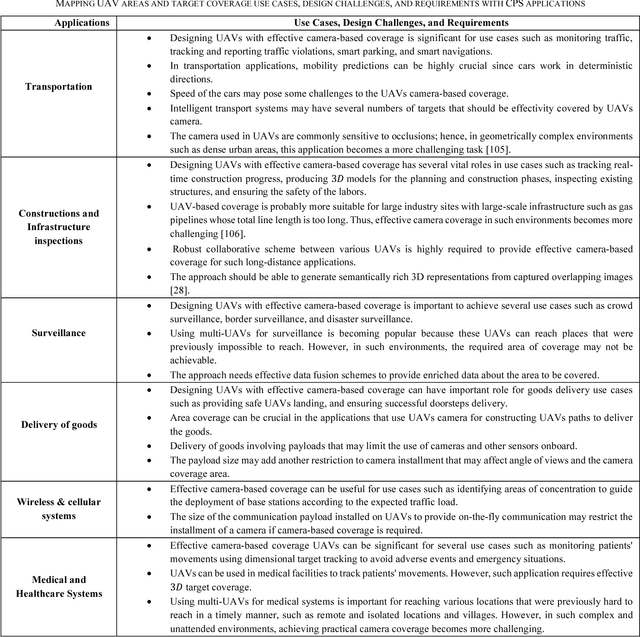
Abstract:Unmanned Aerial Vehicles (UAVs) have recently rapidly grown to facilitate a wide range of innovative applications that can fundamentally change the way cyber-physical systems (CPSs) are designed. CPSs are a modern generation of systems with synergic cooperation between computational and physical potentials that can interact with humans through several new mechanisms. The main advantages of using UAVs in CPS application is their exceptional features, including their mobility, dynamism, effortless deployment, adaptive altitude, agility, adjustability, and effective appraisal of real-world functions anytime and anywhere. Furthermore, from the technology perspective, UAVs are predicted to be a vital element of the development of advanced CPSs. Therefore, in this survey, we aim to pinpoint the most fundamental and important design challenges of multi-UAV systems for CPS applications. We highlight key and versatile aspects that span the coverage and tracking of targets and infrastructure objects, energy-efficient navigation, and image analysis using machine learning for fine-grained CPS applications. Key prototypes and testbeds are also investigated to show how these practical technologies can facilitate CPS applications. We present and propose state-of-the-art algorithms to address design challenges with both quantitative and qualitative methods and map these challenges with important CPS applications to draw insightful conclusions on the challenges of each application. Finally, we summarize potential new directions and ideas that could shape future research in these areas.
A Survey of Machine and Deep Learning Methods for Internet of Things Security
Jul 29, 2018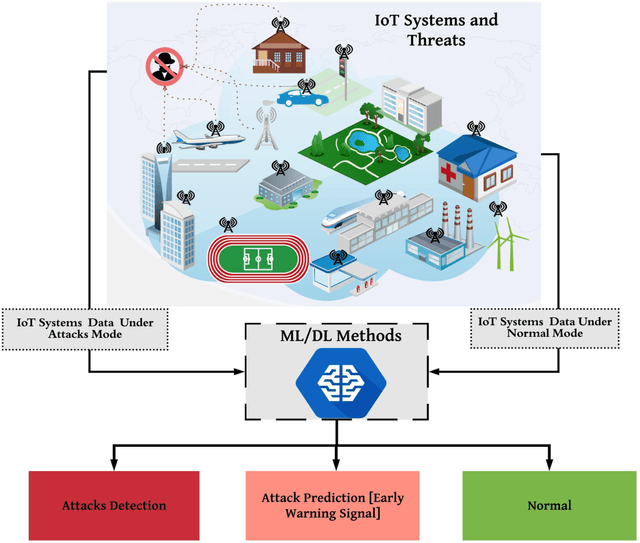
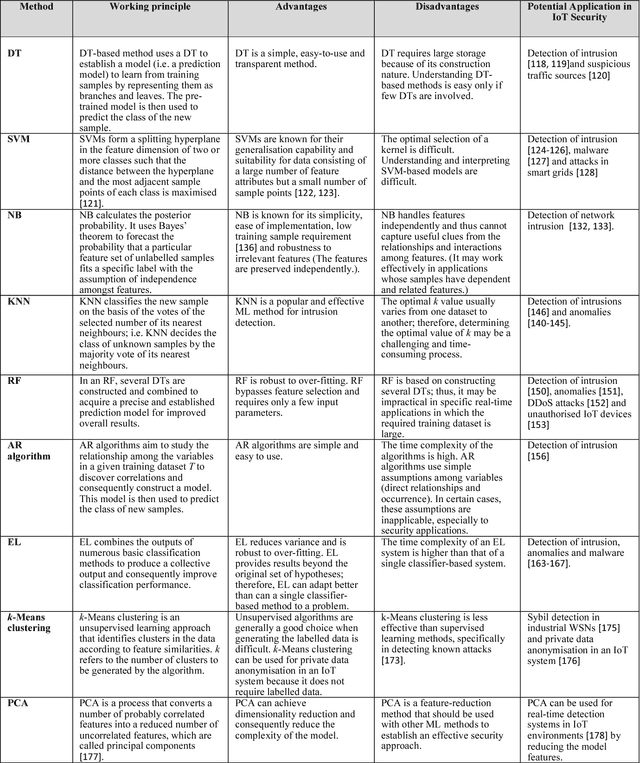
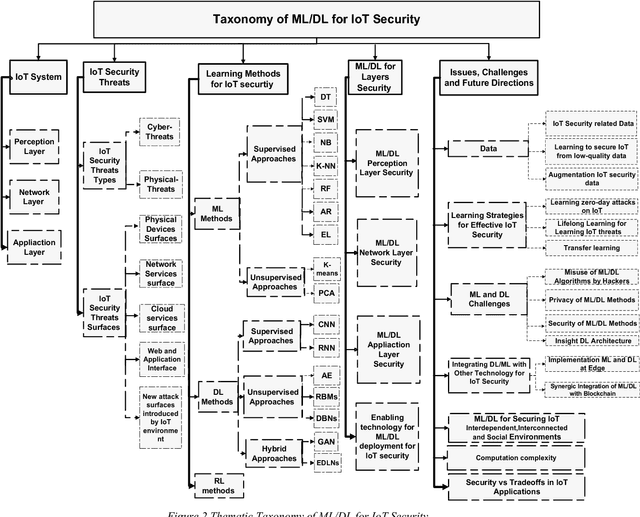
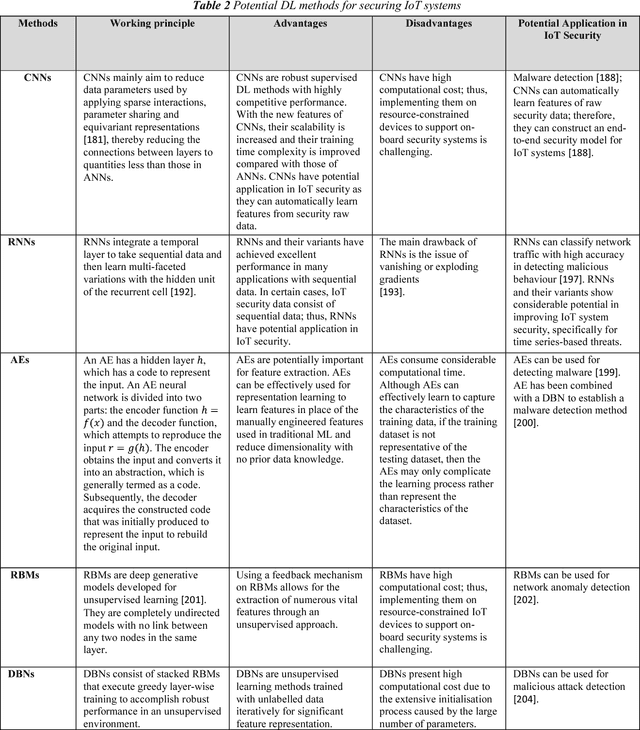
Abstract:The Internet of Things (IoT) integrates billions of smart devices that can communicate with one another with minimal human intervention. It is one of the fastest developing fields in the history of computing, with an estimated 50 billion devices by the end of 2020. On the one hand, IoT play a crucial role in enhancing several real-life smart applications that can improve life quality. On the other hand, the crosscutting nature of IoT systems and the multidisciplinary components involved in the deployment of such systems introduced new security challenges. Implementing security measures, such as encryption, authentication, access control, network security and application security, for IoT devices and their inherent vulnerabilities is ineffective. Therefore, existing security methods should be enhanced to secure the IoT system effectively. Machine learning and deep learning (ML/DL) have advanced considerably over the last few years, and machine intelligence has transitioned from laboratory curiosity to practical machinery in several important applications. Consequently, ML/DL methods are important in transforming the security of IoT systems from merely facilitating secure communication between devices to security-based intelligence systems. The goal of this work is to provide a comprehensive survey of ML /DL methods that can be used to develop enhanced security methods for IoT systems. IoT security threats that are related to inherent or newly introduced threats are presented, and various potential IoT system attack surfaces and the possible threats related to each surface are discussed. We then thoroughly review ML/DL methods for IoT security and present the opportunities, advantages and shortcomings of each method. We discuss the opportunities and challenges involved in applying ML/DL to IoT security. These opportunities and challenges can serve as potential future research directions.
 Add to Chrome
Add to Chrome Add to Firefox
Add to Firefox Add to Edge
Add to Edge